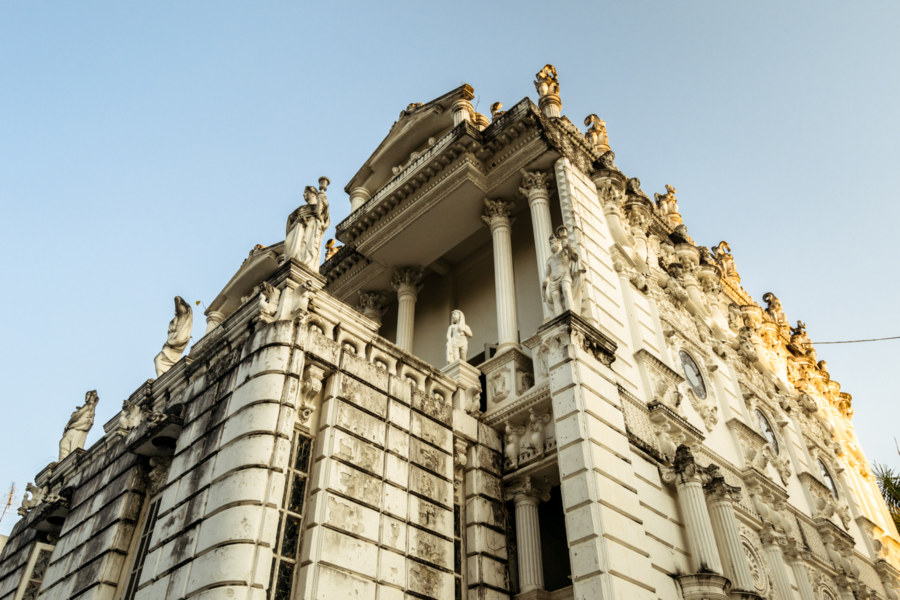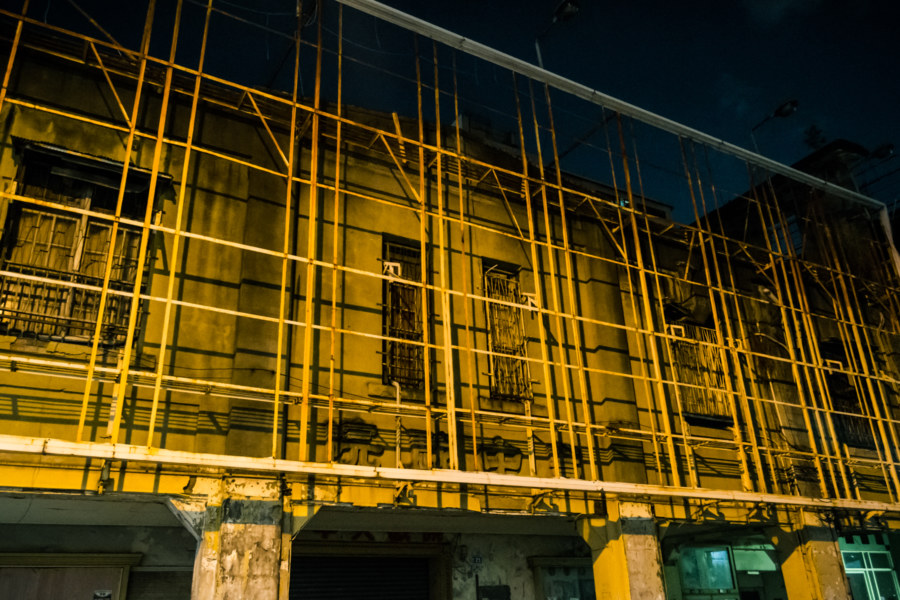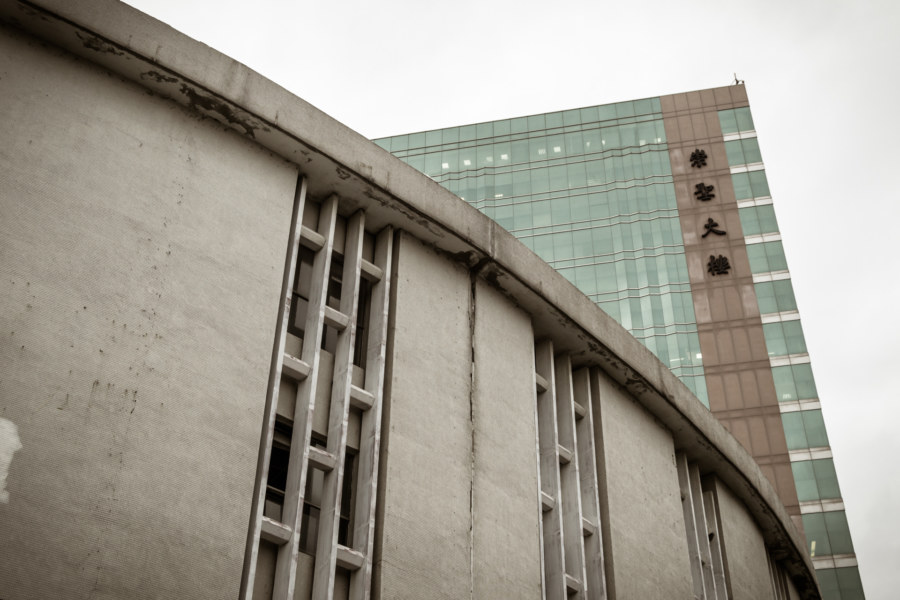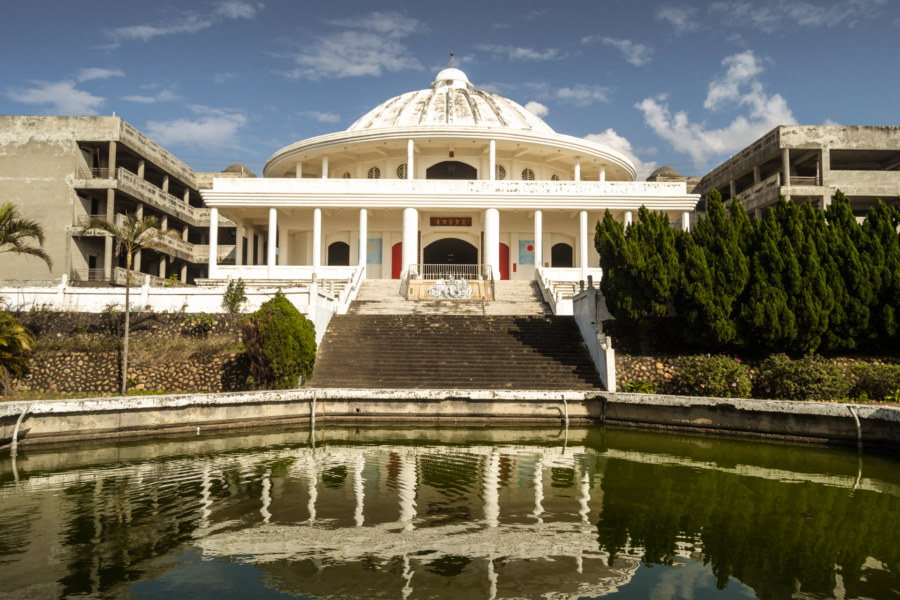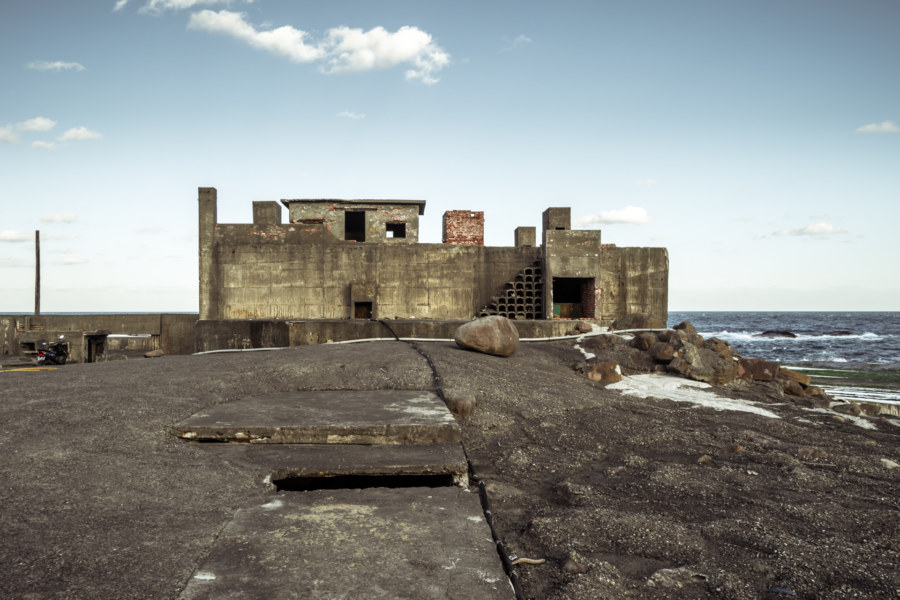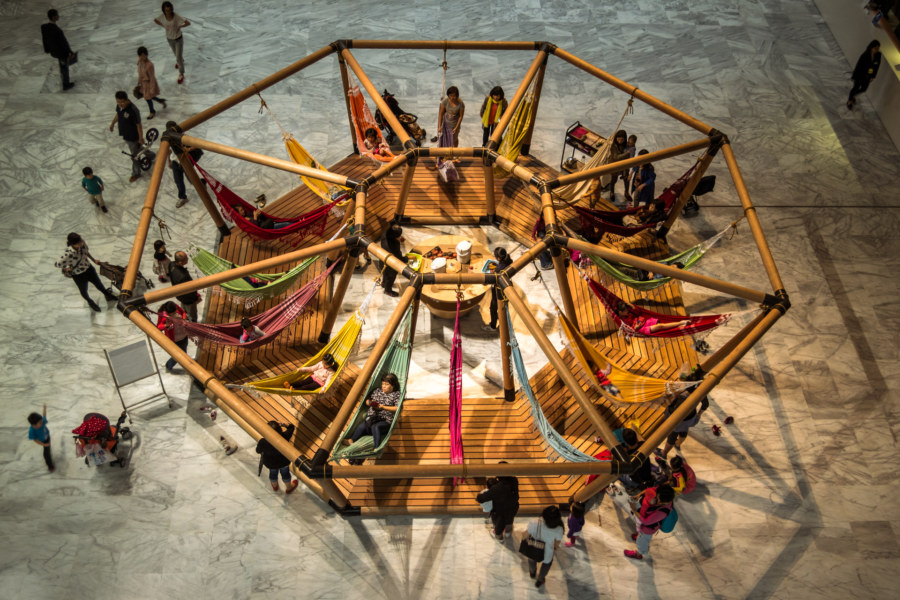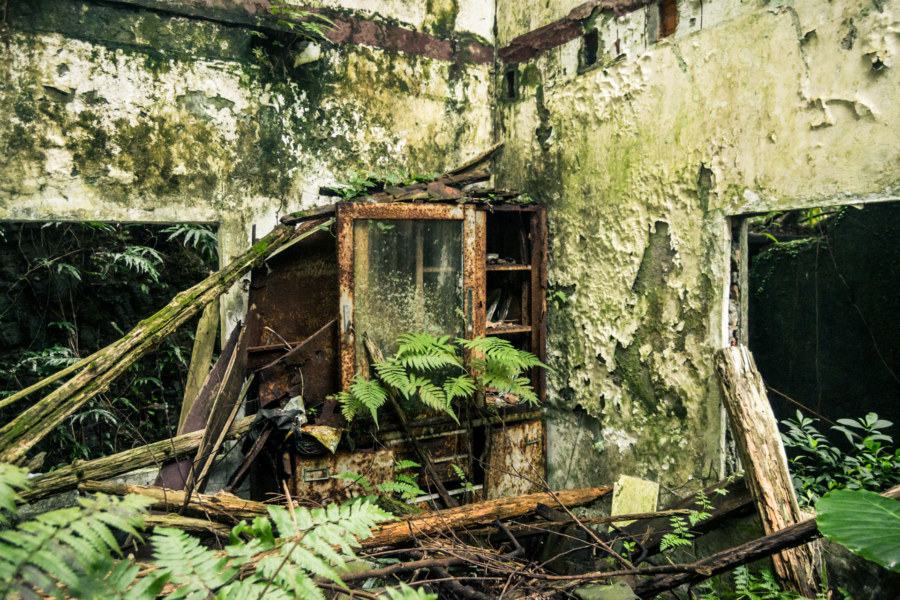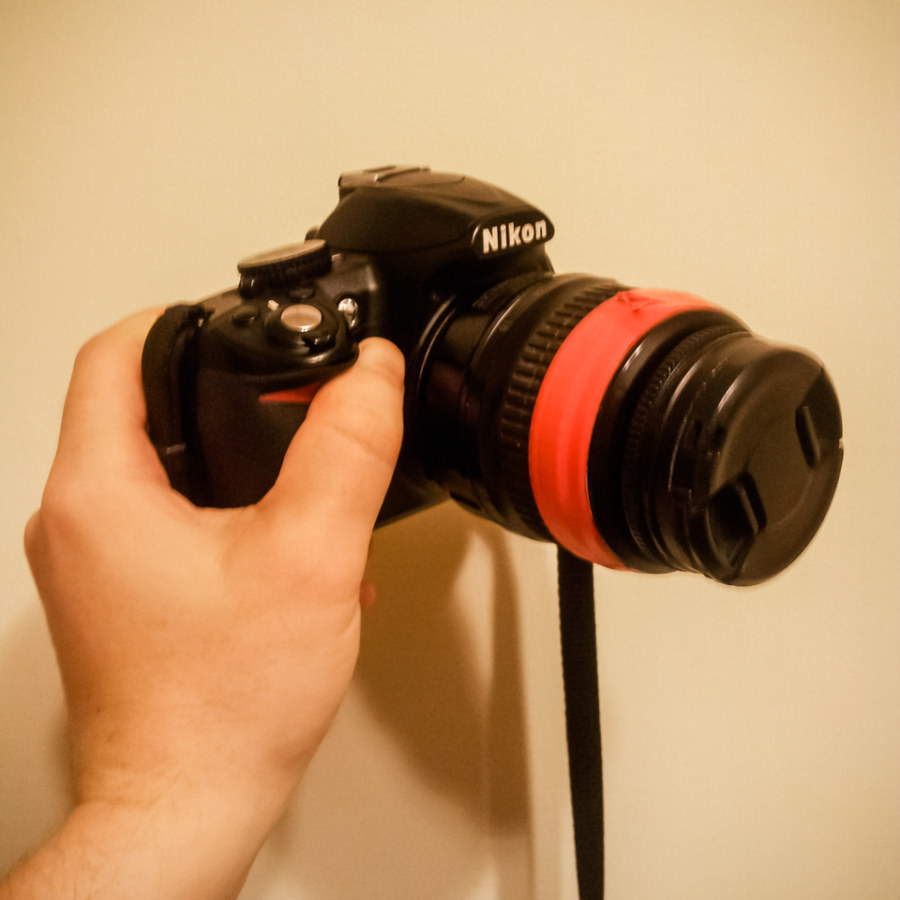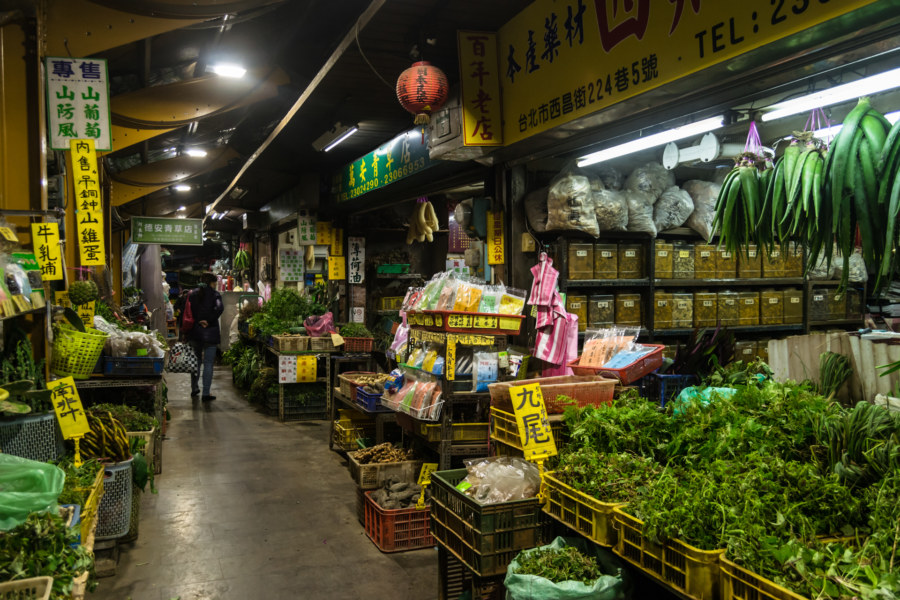Last year I shared my exploration of the House of Success, an extravagant palatial ruin in the northwest corner of Chiang Mai immediately inside the old city walls. In that post I noted that there were two additional buildings of a similar style at the same site, one an active business and the other occupied by squatters. Returning this year for a second visit I was surprised to see that the squatters had left. Wasting no time, I strode into the Jangmuarinnakorn House, more generally known as the White Lion House, to document a previously missing piece of the puzzle.
Fengzhong Theater 豐中戲院
Fēngzhōng Theater 豐中戲院 is one of many abandoned theaters in downtown Taichung. Located a stone’s throw away from Taichung Station, this theater was originally the Taiwan Opera Theater 台灣歌劇戲院, a performance venue founded at the very end of Japanese colonial rule in 1944. According to this source the name was changed to Fengzhong Theater when it was converted for use as a cinema in 1953. It was in continuous operation until 2004 when it was closed and finally abandoned.
Qiaoyou Building in the News
Photos from my exploration of the Qiaoyou Building 喬友大廈 in Changhua City were in the Taiwanese news recently. UDN published a story that sparked a fair amount of sharing and discussion on Facebook most prominently here and here.
Second Taipei City Council Building 第二台北市議會大廈
One of the more peculiar ruins I’ve seen in Taiwan was a building immediately across from the Control Yuan (監察院), one of the five branches of government, on Zhōngxiào West Road (忠孝西路). It was inaugurated as the second home of the Taipei City Council (台北市議會) in 1964 after moving from nearby Zhongshan Hall (中山堂). In 1990 the city council relocated to its present base in Xinyi and the building was converted into a police station before being completely abandoned in 2007. Despite this the building continued to be known as the Second Taipei City Council Building (第二台北市議會大廈).
Wansheng Zizhu Monastery 萬聖紫竹寺
Wànshèng Zǐzhú Monastery (萬聖紫竹寺) is an unusually austere temple located on the seaward slope of the Dadu Plateau (大肚台地) in Shalu, Taichung. At first I assumed it was abandoned, for there was absolutely nobody around when I visited. The main hall is in an obvious state of disrepair and the two flanking buildings remain unfinished. After wandering into both altars I left with more questions than answers. Apart from the Putuoshan White Temple it isn’t at all like most other temples I’ve seen in Taiwan.
Explorations of the Pacific Edge 1
These photos were taken two years ago after cycling through the Old Caoling Tunnel 舊草嶺隧道 into Toucheng, Yilan. The first set of six photos were all shot along the rugged shoreline of the Láilái Geological Area 萊萊地質區 while the last four were captured at Mǎgǎng 馬崗, a half-abandoned fishing village on Cape San Diego 三貂角 (pinyin: Sāndiāojiǎo), the easternmost tip of Taiwan. All were captured in Gongliao. From here the vast Pacific Ocean stretches all the way to Baja California in Mexico.
Taipei Biennial 2014: Art in the Age of the Anthropocene
Curated by Nicolas Bourriaud, the Taipei Biennial 2014 was held at the Taipei Fine Arts Museum (臺北市立美術館) in Zhongshan from September into the early part of the new year. The theme is “art in the age of the anthropocene”, the current geophysical epoch defined by humankind’s enormous impact on the natural world. From the curator’s notes: this exhibition is organized around the cohabitation of human consciousness with swarming animals, data processing, the rapid growth of plants and the slow movements of matter
. I am no serious critic but I certainly appreciate thought-provoking art when I see it. Since I haven’t any expertise in this area I’m mostly going to let the photos speak for themselves, however incomprehensible that might be. Much like the Xu Bing retrospective it was an inspiring experience so I’d like to have a record of it here on my blog.
Ruchuan Village 入船里
Rùchuán Village 入船里 is a small community in Keelung, a historic port town of approximately 373,000 scattered among the rugged hills of northeastern Taiwan. Keelung’s growth over the last century has been constrained by a lack of flat land on which to build—with much of that concentrated at the foot of the harbour that now constitutes the downtown core. With few other options for expansion the city has sprawled upward along the hillsides and deep into the many valleys leading up from the port.
Camera Gear List: 2016 Edition
People often ask me what camera I use, presumably because they like my photography and figure I must have a bunch of high-end equipment. Usually I laugh, somewhat awkwardly, as nothing could be further from the truth, and provide a sheepish answer. My gear isn’t anything special—in fact, it’s about as shabby as can be.
Most of the photos I’ve posted on this site from around 2011 until now were shot on a Nikon D3100 with the same 18–55mm lens it came with (pictured here). Over the years this camera has seen a great deal of use and is now bruised and battered, missing a few pieces, and completely without labels on any of the controls (as they’ve all worn off long ago). The lens is in even worse shape—not only is it held together with electrical tape that doesn’t entirely prevent light seeping in from seeping the bottom edge (spoiling most low-light and night-time shots) it also has a loose connection that inhibits auto-focus from working as it should most of the time.
Herb Alley 青草巷
Herb Alley (青草巷, pinyin: Qīngcǎo Xiàng) is a minor attraction immediately adjacent to the famous Lóngshān Temple (龍山寺) in Monga, the most historic part of Wanhua, Taipei. Hundreds of years ago, long before western medicine came to Taiwan, it was common for people to visit the temple, pray to the relevant gods, and receive herbal prescriptions for whatever ailed them. Vendors setup shop outside the temple gates to help fill these prescriptions. Decades ago the prescriptions themselves were outlawed (and rightfully so) but the tradition of selling herbs next to the temple continues, albeit in a more orderly fashion out of actual shops along Xīchāng Street Lane 224 西昌街224巷.
